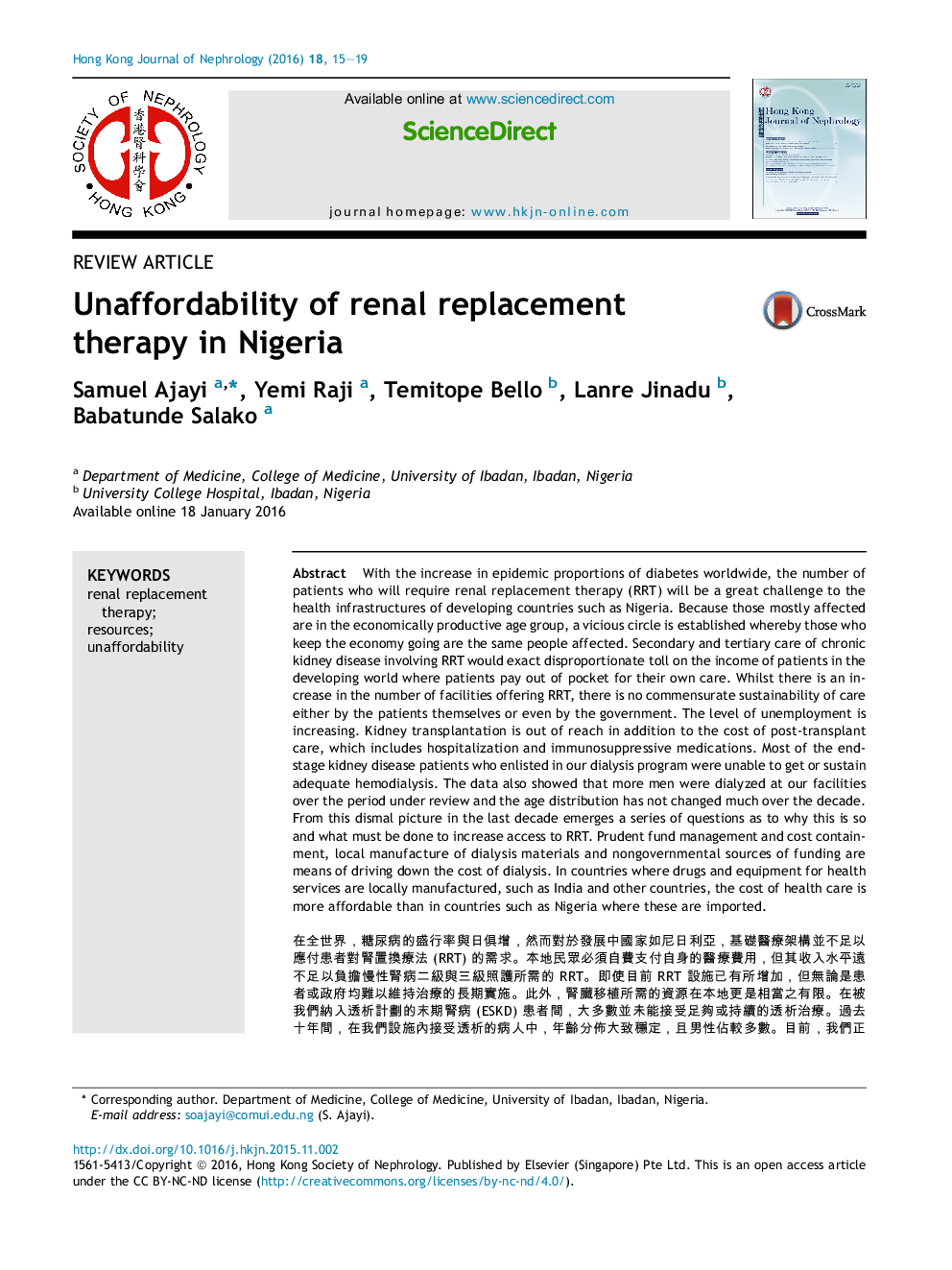| Article ID | Journal | Published Year | Pages | File Type |
|---|---|---|---|---|
| 3853938 | Hong Kong Journal of Nephrology | 2016 | 5 Pages |
With the increase in epidemic proportions of diabetes worldwide, the number of patients who will require renal replacement therapy (RRT) will be a great challenge to the health infrastructures of developing countries such as Nigeria. Because those mostly affected are in the economically productive age group, a vicious circle is established whereby those who keep the economy going are the same people affected. Secondary and tertiary care of chronic kidney disease involving RRT would exact disproportionate toll on the income of patients in the developing world where patients pay out of pocket for their own care. Whilst there is an increase in the number of facilities offering RRT, there is no commensurate sustainability of care either by the patients themselves or even by the government. The level of unemployment is increasing. Kidney transplantation is out of reach in addition to the cost of post-transplant care, which includes hospitalization and immunosuppressive medications. Most of the end-stage kidney disease patients who enlisted in our dialysis program were unable to get or sustain adequate hemodialysis. The data also showed that more men were dialyzed at our facilities over the period under review and the age distribution has not changed much over the decade. From this dismal picture in the last decade emerges a series of questions as to why this is so and what must be done to increase access to RRT. Prudent fund management and cost containment, local manufacture of dialysis materials and nongovernmental sources of funding are means of driving down the cost of dialysis. In countries where drugs and equipment for health services are locally manufactured, such as India and other countries, the cost of health care is more affordable than in countries such as Nigeria where these are imported.在全世界,糖尿病的盛行率與日俱增,然而對於發展中國家如尼日利亞,基礎醫療架構並不足以應付患者對腎置換療法 (RRT) 的需求。本地民眾必須自費支付自身的醫療費用,但其收入水平遠不足以負擔慢性腎病二級與三級照護所需的 RRT。即使目前 RRT 設施已有所增加,但無論是患者或政府均難以維持治療的長期實施。此外,腎臟移植所需的資源在本地更是相當之有限。在被我們納入透析計劃的末期腎病 (ESKD) 患者間,大多數並未能接受足夠或持續的透析治療。過去十年間,在我們設施內接受透析的病人中,年齡分佈大致穩定,且男性佔較多數。目前,我們正研究如何能促進 RRT 普及實施的方案。透過謹慎的理財與成本控制、透析物料的本土生產、及非政府資金的運用,透析的相關費用可望得以降低。目前,發展中國家如尼日利亞的藥物與醫療器材大多仰賴進口,因此相關物資的本土生產是降低醫療成本的可行方案。
